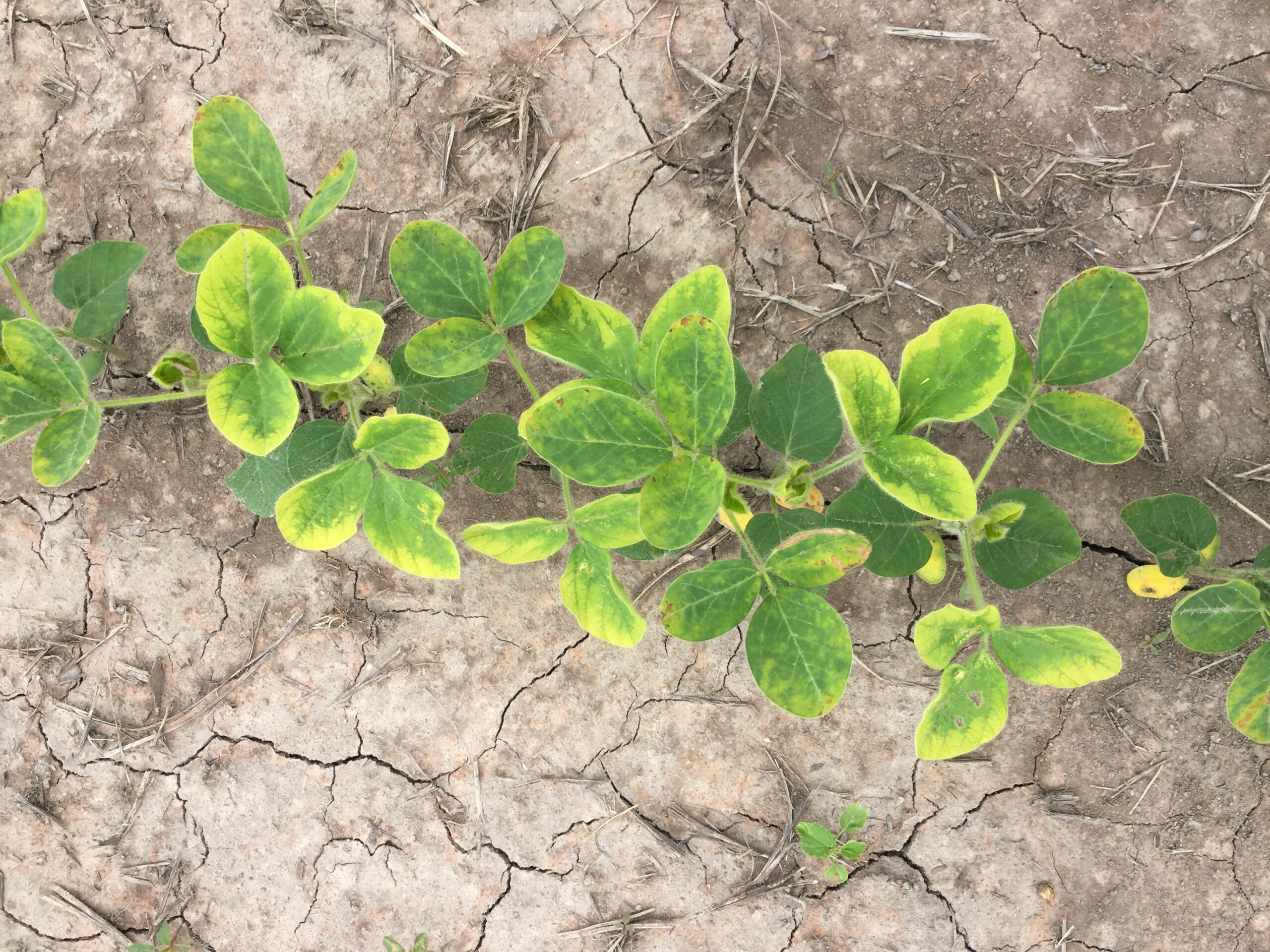Learn to diagnose field problems when they happen.
Any agronomist would tell a farmer to scout each field multiple times a year. That is the only way you can identify a problem and its cause. Waiting till harvest is too late.
Crop consultants and farmers work together to determine field issues and often face difficult steps trying to understand what happened and when it happened. It is easier to diagnose any field problem closer to the time it develops than days, weeks or months afterward. Whether it’s an insect, disease, weather, herbicide or manmade issue the closer to the time it occurs the simpler it is to identify the problem.
In the following photograph there is a noticeable discoloration of the young soybean plants. This situation started when areas in a soybean field began to show yellowing and stunting adjacent to a corn field. Upon inspection of the field there were small yellowing weeds in the same area. All these symptoms appeared prior to soybean post herbicide application and no pre-emergent herbicides were applied. After observing the adjoining corn field and noticing similar discoloration in the broadleaf weed species along the edge of the corn field it seemed evidence was pointing at a possible drifted application of a bleaching herbicide.

In this specific situation the area received rainfall after having been hot and dry for several days and the soybeans resumed normal growth. As new soybean trifoliates emerged tissue appeared normal and plant height matched the unaffected areas of the field after 10 days. The recovery of the plant removes fertility issues as a probable cause. Continued inspection of the impacted area shows no difference between the affected and unaffected areas. The damage appears to have been minimal and occurred early in the season and was followed by adequate moisture to support plant development.
Despite the problem being caused by herbicide drift from one crop to another the impact does not seem to have created a yield-limiting situation. The key to determining what happened to the yellowed and stunted soybeans was looking at the indicator weeds in the same field and in the adjoining corn field. By observing the same bleached appearance in both fields, it was easy to recognize that bleaching herbicides utilized in the corn program had drifted a few feet into the adjoining soybeans.
When diagnosing an issue as I described, gather all the circumstantial evidence, begin to reason what the cause was and eliminate possibilities one by one until you have arrived at a solution. Crop diagnosis is a sleuthing activity and it takes the careful work to fit together the pieces of the puzzle.




 and then
and then